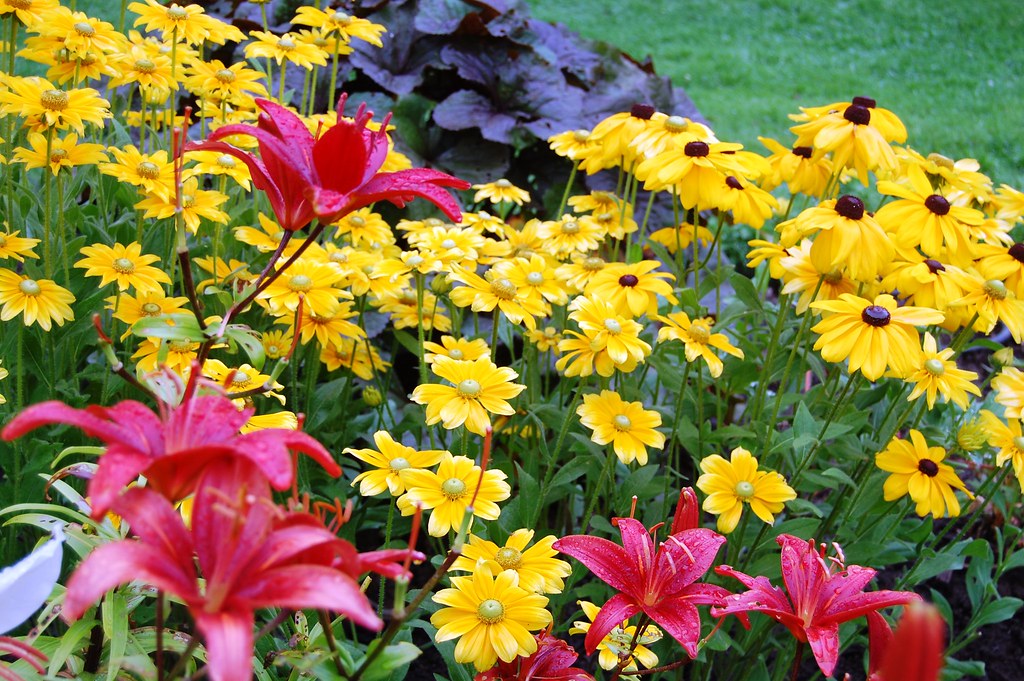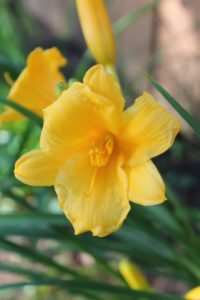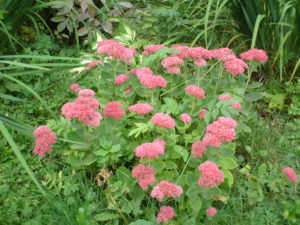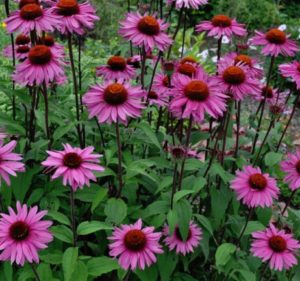
Favorite Easy-to-Grow Perennials
As you may know, perennials are plants which flower every year, fairly consistently. Perennials regrow from their root stock each year, usually emerging in the spring. They complete their growing cycle in one season, followed by a period of dormancy. They can add a real cost-saving benefit as many perennials multiply and spread, giving your garden a mature and established look.
The availability of perennials varies by area and winter hardiness zones. No matter where you live, it is likely you have a wide range of perennial plant choices. Let’s take a look at a variety of easy-to-grow perennials with wide appeal and resilience.
Day lily: The all-American flower, the day lily is synonymous with summer in New England.
Ubiquitous in the summer are the yellow day lily (Stella d’Oro) and the roadside (orange) lily. If you think day lilies are a little “ho-hum,” you have not yet seen the many thousands of colors and new varieties available. Both beginners and experts can create new hybrids as day lilies are easy to cross- pollinate and hybridize.

With a wide range of varieties, remarkably day lilies are hardy in zones 1 – 11! They are a wonderful addition to your garden landscape as they are easy to grow. Day lilies will grow in almost any type of well-drained soil and in both sunny and part-shade conditions. Day lilies grow in clumps; once you have a large clump, divide it to make new plantings.
If you would like to familiarize yourself with the tremendous number of day lily varieties, visit a day lily grower and breeder in your area: Olallie Day Lily Garden (Vermont); The Lily Farm (Texas); Tranquil Lake Nursery (Massachusetts); Richard T. Howard [award winning hybrids] (Connecticut); Slate Hill Farm (New York state); Amador Flower Farm (California) . . . to name only a few!
Sedum: Sedum is another large family of plants with hundreds of species and varieties.
Commonly known as stonecrop, these plants are found in gardens and natural environments in many parts of the world. Sedums are a succulent so its leaves store water making it wonderfully drought-tolerant. Sedums generally like a sunny spot and can grow in most any well-drained soil. Sedums are common in rock gardens and are hardy in zones 3-9.

The most common sedum by far is the tall, upright “Autumn Joy.” It might seem over-used but I am always happy to see sedum in the garden landscape. It is a very dependable plant with true four-season interest. Flowering in late summer, emerging flower buds are a delicate pink, changing to a deep crimson towards fall. Allowing the plant to retain the dried flower heads creates winter interest as well as food for winter birds. Sedum “Autumn Joy” is another plant which is easily divided to produce more plants.
Cone Flower: Echinacea purpurea, or purple cone flower, is another very dependable and common garden staple.
The name is derived from the Greek “echinos” meaning hedgehog, referring to the bristly center of the flower. A tall, upright, clumping plant, purple coneflower adds definition to a perennial border. It loves the hot, dry weather of mid-summer, making it another great drought-tolerant addition to your garden. Echinacea are hardy in zones 3-9.
 Similar to other perennials, there are now many Echinacea varieties and colors. Have a lookat bright orange “Cheyenne Spirit,” the vibrant pink of “Wild Berry,” or the unusual chartreuse of “Green Line.”
Similar to other perennials, there are now many Echinacea varieties and colors. Have a lookat bright orange “Cheyenne Spirit,” the vibrant pink of “Wild Berry,” or the unusual chartreuse of “Green Line.”
With daylilies, sedums and cone flowers, you have the staples of most perennial gardens. If you are a beginning gardener, starting out with these three plants will give you a good back bone for your garden. You may have a gardening friend who will give a clump of daylilies to add to your collections. In turn, when dividing your over-grown sedum, trade a clump with a fellow gardener for a new plant. It’s a great way to expand your garden and find like-minded friends!
Happy Gardening- Francesca


Sorry, the comment form is closed at this time.